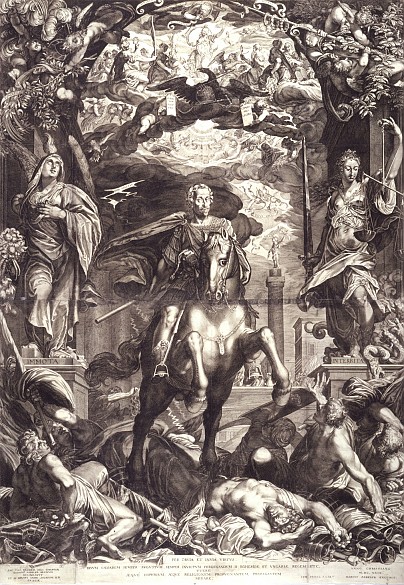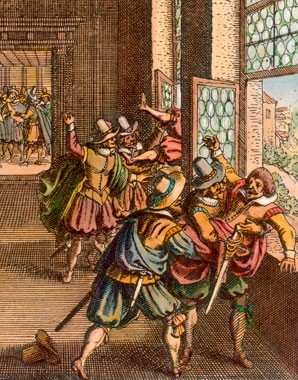Ferdinand II: an emperor’s fantasies of omnipotence
Ferdinand’s aim was to establish a global Habsburg Monarchy based on the Holy Roman Empire. The emperor wanted to become absolute ruler over the Empire. The first step towards this goal was the restoration of religious unity under the banner of Catholicism.
Ferdinand succeeded in getting himself elected emperor of the Holy Roman Empire by 1619, despite the unresolved situation in the patrimonial Habsburg dominions. The suppression of the revolt by the Bohemian Estates in 1620 and the restoration of his rule in the Habsburg lands gave him additional authority. The emperor now wanted to transform the Holy Roman Empire in accordance with the principles of monarchical absolutism, and to enforce religious conformity.
After the reign of Frederick of the Palatinate as king of Bohemia had been ended by the Battle of the White Mountain and he had been driven from Prague, mocked as the Winter King, Ferdinand issued a decree against him, declaring his lands and titles within the Holy Roman Empire as forfeited. When the emperor additionally deprived him of his electoral title in 1623, awarding it to his ally, Duke Maximilian of Bavaria, the other electors of the Empire saw this as constituting a break with imperial tradition. The mistrust of the non-Catholic Estates of the Empire was reinforced by the now openly implemented Counter Reformation which was putting a question mark over the Augsburg Settlement of 1555 that had achieved a compromise between the religious denominations.
Fearing that too much power would be concentrated in the emperor’s hands within the Empire, Denmark declared war on Ferdinand in an alliance with the Protestant electors. However, thanks to the strategic and organizational skill of its supreme commander, Albrecht von Wallenstein, the imperial army fought an extremely successful campaign, achieving a string of rapid victories. Wallenstein introduced a new kind of warfare in which the occupied territory was made to pay for the provisioning of the military, thus reducing the costs of war for the emperor. However, the negative consequences of this were widespread devastation and plundering that at times brought excesses in their wake: the sacking of the city of Magdeburg by imperial troops came to symbolize the destructive powers of martial fury in the Thirty Years’ War.
In first phase of the war the emperor and his allies seemed invincible. However, from its position of superiority the Viennese court began to overplay its hand. The emperor’s maximum demand was formulated in the so-called Edict of Restitution of 1629, when Ferdinand demanded the restoration of all the ecclesiastical territories and possessions of which the Catholic Church had been stripped since 1522 and which had meanwhile been secularized by Protestant princes and confiscated for their own benefit. At this open declaration of hostility the Protestant princes of the Empire now came together in a common front against Ferdinand, uniting the Lutherans and Calvinists who had previously been divided.













